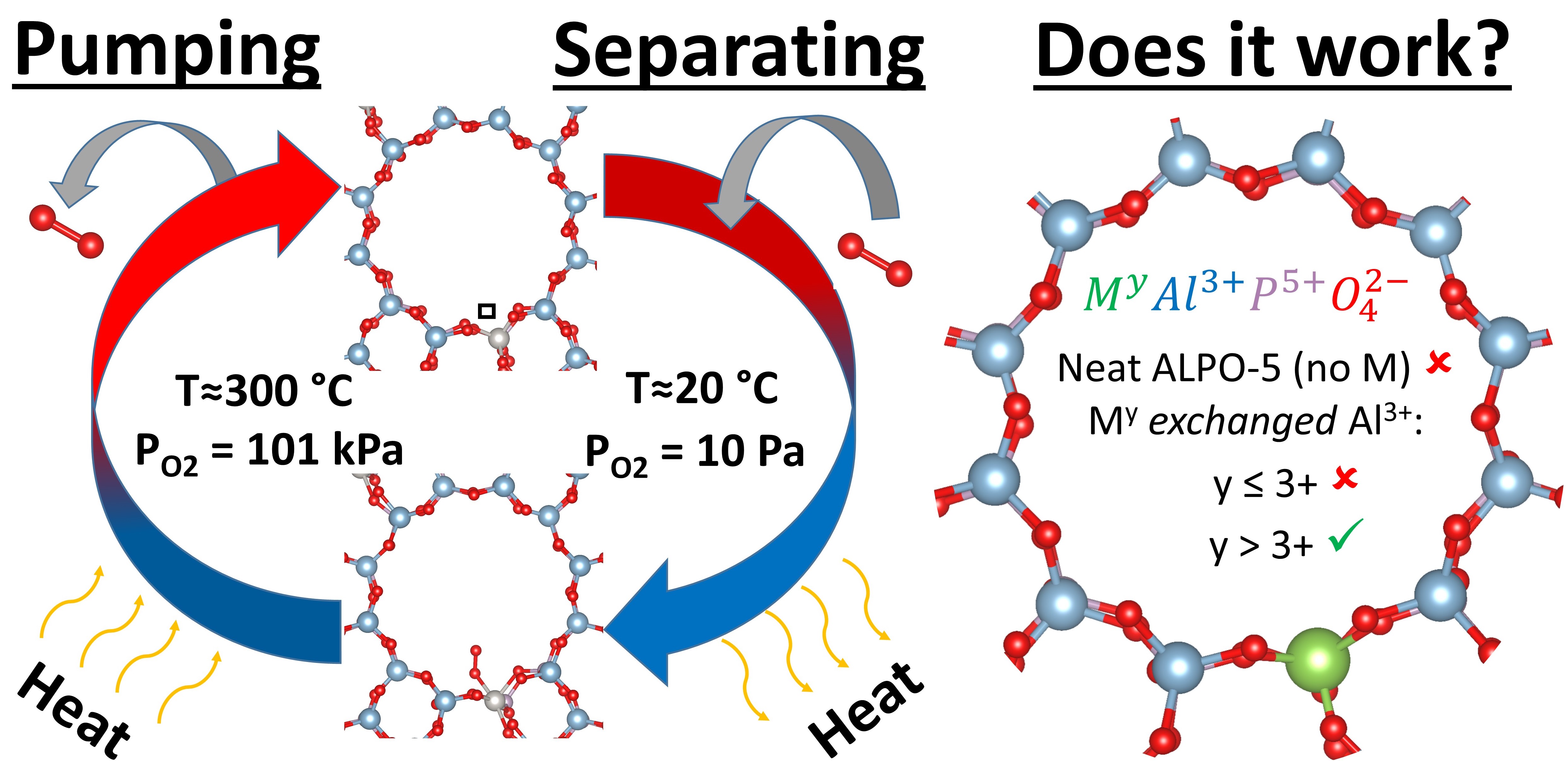Many chemical processes depend on having an environment that is low in oxygen partial pressure (P
O2 < 100 Pa); sorption pumps are a promising route to establishing that environment by either oxygen pumping or oxygen separation from an inert gas. Near ambient sorption-based processes rely on either pressure or thermal swings, requiring no moving parts, no electricity, and neither very high nor very low temperatures. In this work, we use
ab initio calculations to explore zeolites as a class of materials for sorption-based oxygen pumping/separation. Our calculations indicate that while the neat AlPO
4 composition of ALPO-5 zeolite (IZA-code AFI) does not adsorb O
2, O
2 does adsorb on zeolites selectively substituted with transition metals and metalloids and hence, can enable separation and pumping. ALPO-5 substituted with Si, Ge, Sn, Pd, Pt, Ti, V, Cr, Mn, Zr, Mo, Hf, W, Ce, and Pr provides adsorption energies ranging from -0.19 to -3.92 eV, (-) indicates exothermic process. Additionally, we provide a comprehensive understanding of what controls the adsorption energy: 1) the substitutions must be able to adopt an oxidation state that is more positive than the cation it replaces, and 2) the size of the pore into which the O
2 adsorbs to the wall. We compare these trends found in substituted ALPO-5 to three other AlPO
4 compositional zeolites VPI-5, SSZ-51, and ALPO-52, IZA-code VFI, SFO, and AFT respectively. We find that the factors in controlling binding energy are confirmed in these three zeolites as VPI-5, which contains on pore ~3 Å larger in diameter, substituted with similar elements results in higher binding energies than ALPO-5. Furthermore, ALPO-52 having smaller pores than ALPO-5 is less favorable to O
2 binding. Lastly SSZ-51s structure is similar to ALPO-5s, with only a 0.5Å dimeter difference in the largest pore, and results in almost identical O
2 binding behavior. Additionally, we conduct a thermodynamic analysis of a thermal swing cycle to approximate the optimal O
2 binding energy for low energy O
2 pumping/separation. We find that the minimum energy cost likely occurs when the adsorption energy is in the range of 0.75 â 1.00 eV (72 â 97 kJ·mol
-1), which corresponds to Ge, V, Pt, or Ce substituted ALPO-5. While also investigating the thermodynamic selectivity towards O
2 adsorption as compared to other air molecules like N
2, CO, CO
2 etc.


